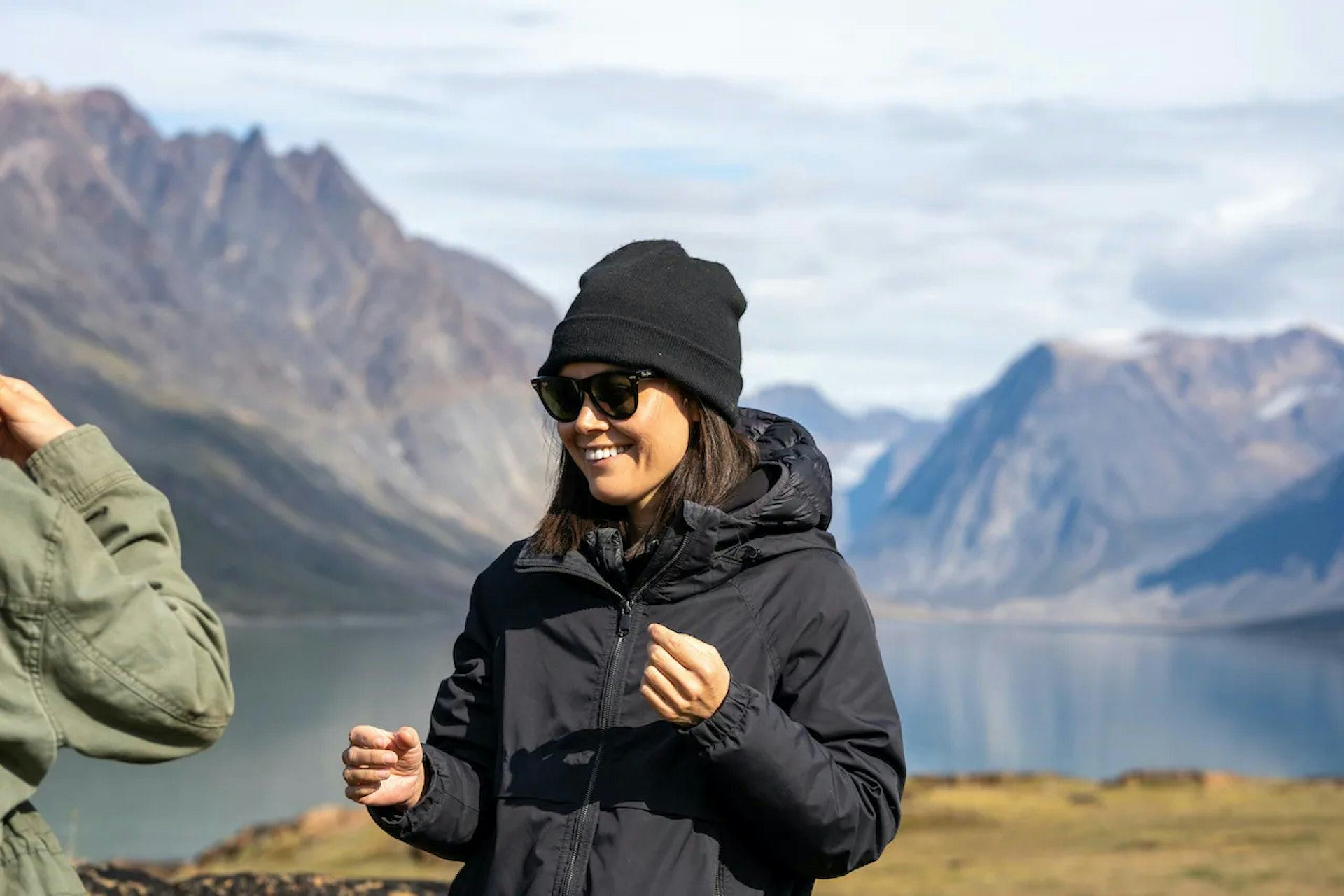
Nyla Innuksuk made a unique Hollywood product: Homegrown sci-fi straight from the Inuit hamlets of her childhood.
The first-time director spent her summers surrounded by snow-capped mountains and constant sunshine in northernmost Canada. It may seem like an odd setting for a young adult horror flick, but she defends her decision to set SLASH/BACK in Pangnirtung, a town with a population of roughly 1,500.
For Innuksuk, the area’s isolation (and its cultural history) made it the perfect setting for a scary story.
“It’s so fun exploring the different creatures and stories from Inuit mythology,” Innuksuk tells Inverse. “There are all sorts of stories we’re told as kids to spook us into behaving well. I think that’s the same for all cultures around the world. But the fact that the Arctic is just so extreme and dangerous makes our children’s cautionary tales much scarier.”

SLASH/BACK stars Tasiana Shirley as Maika, an Inuk teen who struggles to feel love for her sleepy hometown. Maika has spent many an endless summer biking and boating around with a Goonies-esque assortment of friends. But when an alien parasite infects a local bear, the girls are forced to use handmade weapons (and their knowledge of classic sci-fi movies like John Carpenter’s The Thing and Philip Kaufman’s Invasion of the Body Snatchers) to save their town.
Almost the entire cast is made up of local amateur actors, and while Innuksuk could have flown in professionals, she was more than happy to take on this added challenge.
“I wanted to shoot the movie in Pangnirtung, a community that doesn’t have a lot of white people.”
“I wanted to shoot the movie in Pangnirtung, a community that doesn’t have a lot of white people,” she says. “It was important for me to have a cast that reflected that, but we also knew that we’d likely be working with actors who hadn’t acted before.”
Before casting could even begin, however, Innuksuk and her team set up acting workshops in town.
“We wanted to make their performances as strong as possible,” she says. “It’s been great to see how much everyone has grown as actors, particularly the core protagonists.”
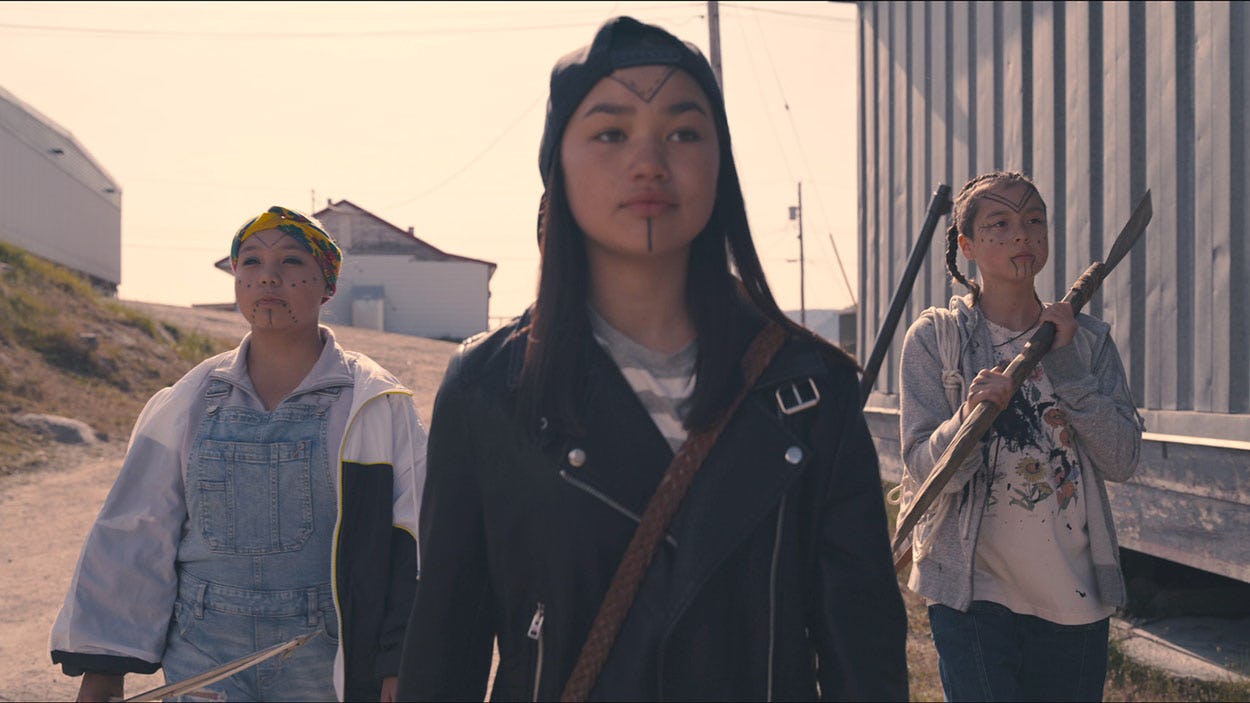
Beyond fighting aliens, SLASH/BACK is a sharp portrayal of the difficulty of growing up Indigenous in modern society. The characters struggle to hang onto their history while also enjoying mainstream pop culture. The movie also touches on class divisions within this small ethnic enclave.
This all comes directly from Innuksuk’s own coming-of-age in Iqaluit, the capital of Nunavut, where she struggled to balance her own pop culture addictions with her inherited culture.
“When I was a teenager, I was such a nerd, and I absolutely loved horror,” Innuksuk says. “I was trying to figure out how I fit into the world. But as an Indigenous person, I was also trying to figure out where my uniqueness fit into that framework.
Her summers, like those of her film’s heroines, were full of boat rides, exploration, and scary movies.
“One of my goals with SLASH/BACK was to make a movie that felt familiar to the stuff I watched and admired growing up, but also unique to this place that I know and love.”
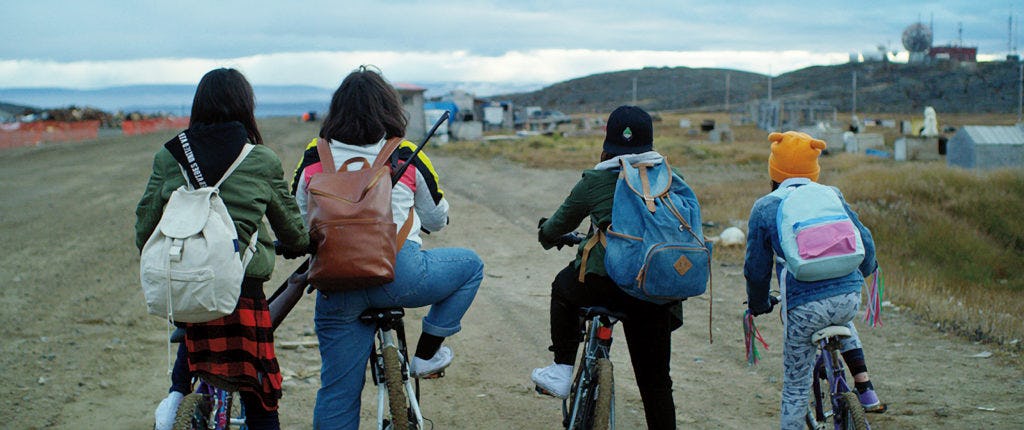
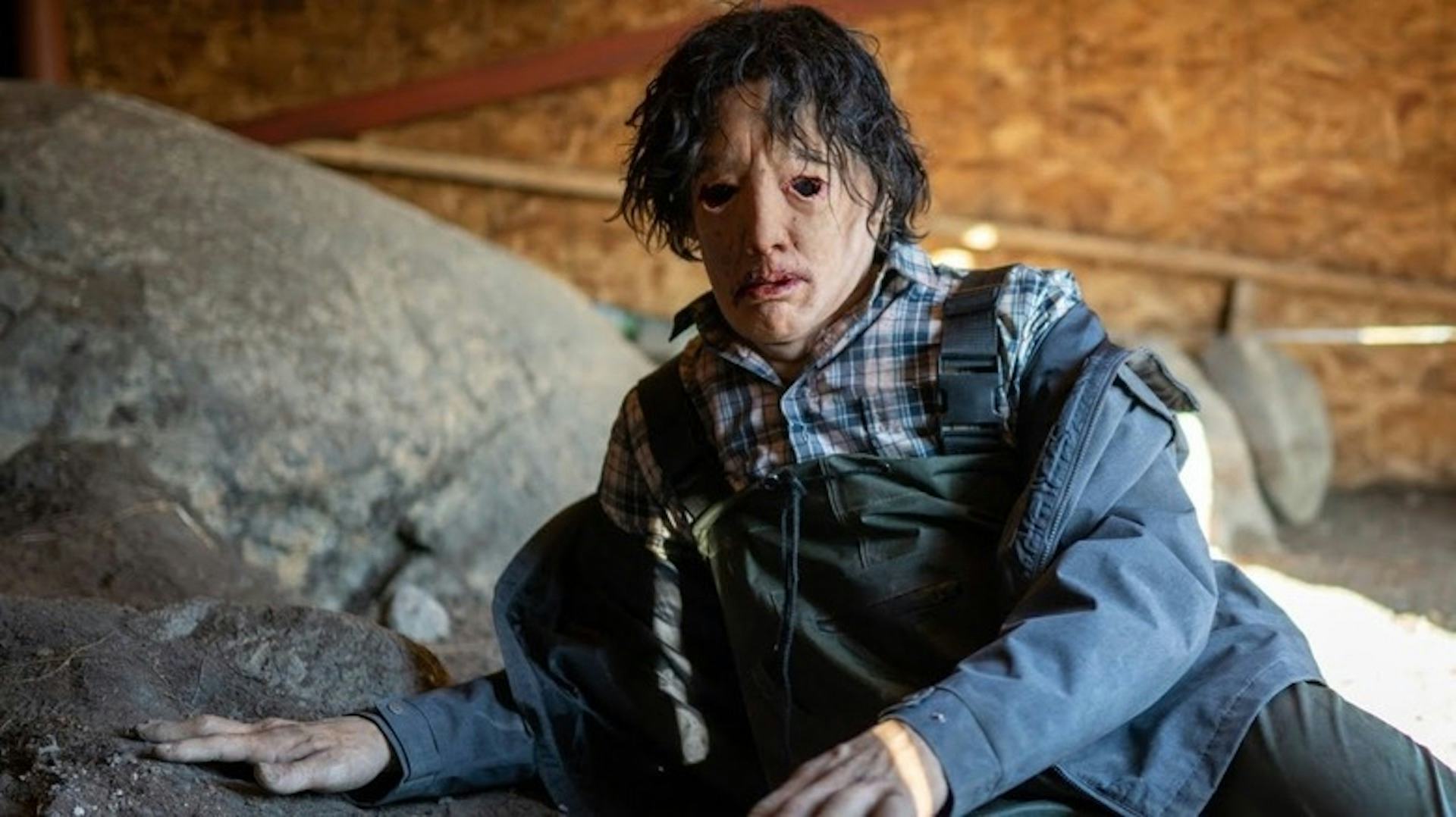
SLASH/BACK could have been shot in the wintertime, an objectively more spine-chilling part of the year when sparsely populated Inuit hamlets are cloaked in darkness and painful temperatures. But Innuksuk says she’s had enough of that. Especially since filming SLASH/BACK required puffy jackets and toques even in the middle of July.
“It was mostly selfish on my part not to film SLASH/BACK in the winter,” Innuksuk says with a laugh. “But I also wanted people who haven’t traveled to the Arctic to see a different side of it. It’s so bright and colorful when the snow goes away, I swear.”
“I didn’t want to freeze while showcasing this cultural dynamic.”
This decision also gave her a chance to portray one of the region’s most unique characteristics: endlessly long summer days. On an average July day in Pangnirtung, the Sun is up for 20 hours and 17 minutes.
“It was great to see how these smaller communities handle the sun rising and not setting for an entire season,” she says. “The kids are done with school, and they go out all the time at any hour of the day, and they’re encouraged to do so and spend as much time outside as possible. They have the run of the town for a few months. I really wanted to capture that on film. And, well, I also didn’t want to freeze while showcasing this cultural dynamic.”
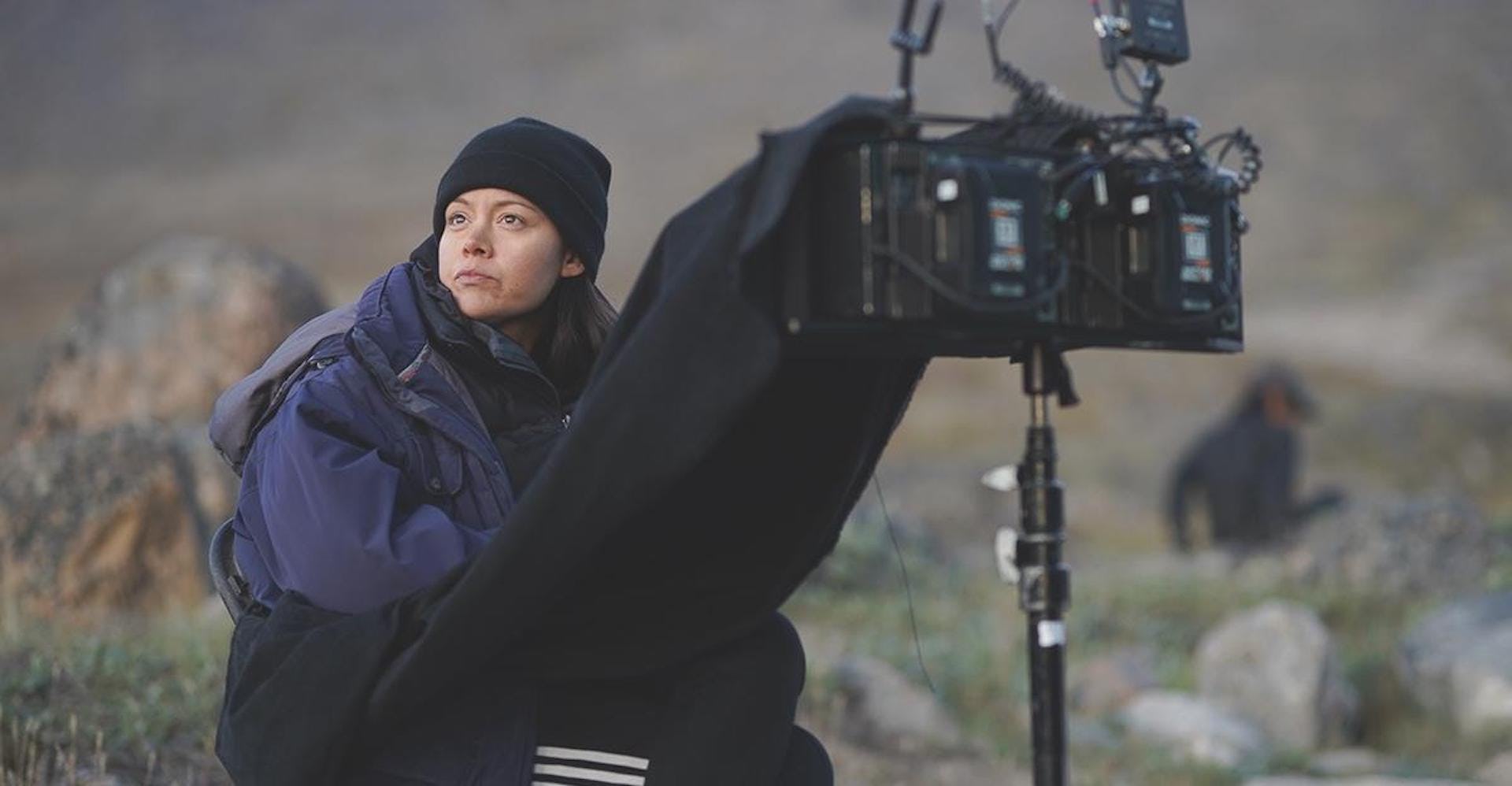
SLASH/BACK’s reception has been very positive among critics, although more mixed among viewers who struggle with amateurish acting or low-budget special effects. Innuksuk is just pleased that her movie — which she admits is groundbreaking less for its overarching storyline and more for its setting and subjects — is reaching viewers beyond her target audience of young Indigenous women.
“We shot this movie a couple of years ago,” she says. “It was the first time I’d ever directed a feature film, and for most of the cast, the first time they’d ever acted in a movie. I learned so much, and the fact that most critics have received this learning experience so well is really just the cherry on top of the adventure.”
“These are stories that we’ve passed down as cautionary tales for generations.”
Innuksuk already has a second script ready to go, which she describes as a more “traditional” psychological thriller.” However, it will still feature her burgeoning directorial signature: elements from Inuit folklore
In this case, it’s a horror flick about the Qallupilluit, feminine sea-beasts who take children who have strayed too far from their villages and drag them beneath the ice before their parents realize they’re missing.
“These are stories that we’ve passed down as cautionary tales for generations, but they’re also stories that we’ve heard from our elders, who claim they’ve had legitimate encounters,” Innuksuk says. “I want to tap into how these creatures would exist in the real world, but with a cast on Indigenous life in the Arctic that is both magical and terrifying.”
SLASH/BACK is available now on VOD.







